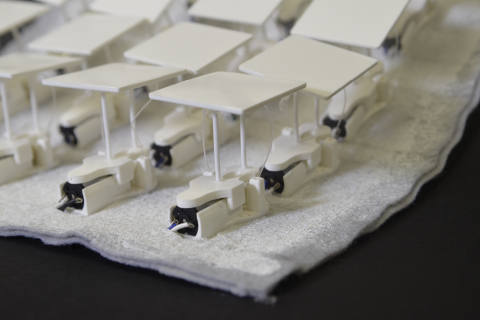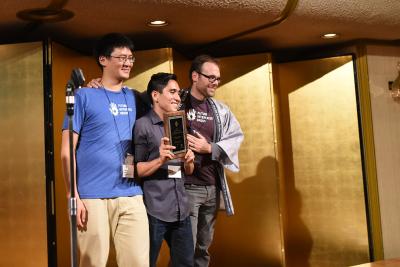Physical Interfaces – Sensing, Haptics, Fabrication
Physical computing bridges the gap between digital and physical worlds by creating interactive systems that sense and respond to real-world conditions. This enhances user experiences through novel interactions.
There are elements of physical interfaces that help us to study how people interact with computers and systems. For example, sensors detect environmental conditions, track movements, or locate touch points. Haptics provide tactile feedback and can make VR interactions feel more realistic. Fabrication blends computer science, design, engineering and manufacturing to turn digital files into physical objects using machines such as 3D printers, knitting or weaving machines, and CNC routers. Digital fabrication allows for rapid prototyping, customization, and the creation of complex geometries optimized for material properties. Our researchers in this area spend a lot of hands-on time building and iterating in our labs.
Students who want to learn more about HCI + physical interfaces might be interested in the following courses:
Faculty Researchers

Engineered Magic: Wooden Seed Carriers Mimic the Behavior of Self-Burying Seeds
NEWSHow seeds implant themselves in soil can seem magical. Take some varieties of Erodium, whose five-petalled flowers of purple, pink or white look like geraniums....

ReCompFig
PROJECTFrom creating input devices to rendering tangible information, the field of HCI is interested in using kinematic mechanisms to create human-computer inter...

The Shape of Pasta: HCII Assistant Professor Morphs Matter
NEWSLining Yao came of age in a small village in China's Inner Mongolia Autonomous Region. Like most families in her town, she didn't have a computer. She didn't even have a television. On t...

HCII at UIST 2016
NEWSThe Human-Computer Interaction Institute had a strong showing at this year's ACM Symposium on User Interface Software and Technology (UIST.) Researchers from the HCII represented nine acce...

